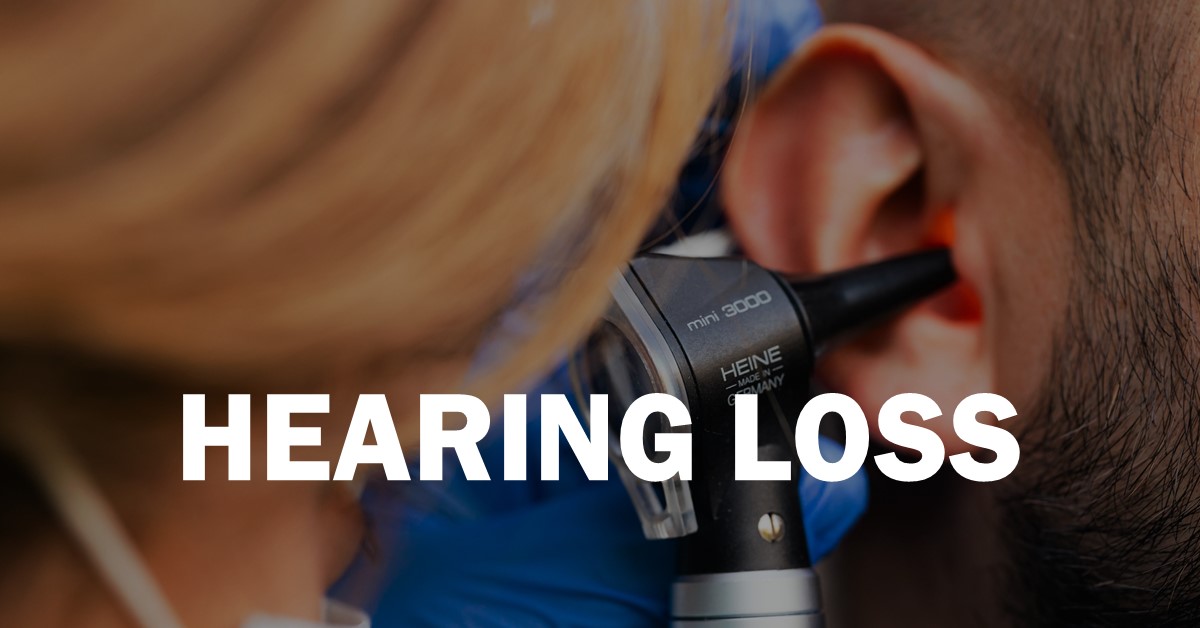Conductive Hearing Loss
What Causes Conductive Hearing Loss?
Conductive hearing loss happens when the natural movement of sound through the external ear or middle ear is blocked, and the full sound does not reach the inner ear. Conductive loss from the exterior ear structures may result from:
- Earwax—Your body normally produces earwax. In some cases, it can collect and completely block your ear canal causing hearing loss.
- Swimmer’s ear—Swimmer’s ear, also called otitis externa, is an infection in the ear canal often related to water exposure, or cotton swab use.
- Foreign body—This is typically a problem in children who may put common objects including beads and beans in their ears but can also be seen in adults most often by accident, such as when a bug gets into the ear.
- Bony lesions—These are non-cancerous growths of bone in the ear canal often linked with cold water swimming.
- Defects of the external ear canal, called aural atresia—This is most commonly noted at birth and often seen with defects of the outer ear structure, called microtia.
- Middle ear fluid or infection
- Ear drum problems
How We Can Help
If you are experiencing hearing loss symptoms, our Audiologists can help you resolve or at least mitigate the issues. Our recommended treatment depends on the underlying cause and severity of your hearing loss.
- Hearing Aids: A hearing aid can mitigate your hearing loss if the damage is in your inner ear.
- Removing Earwax Blockage: This blockage is a reversible cause of hearing loss.
- Cochlear Implants: A cochlear implant bypasses damaged section of your inner ear and directly stimulates the hearing nerve.
- Surgical Procedures: Surgery can be option for hearing loss.
Please contact our office at (203) 578-4630 to make an appointment.
Conductive loss associated with middle ear structures include:
- Middle ear fluid or infection—The middle ear space normally contains air, but it can become inflamed and fluid filled (otitis media). An active infection in this area with fluid is called acute otitis media and is often painful and can cause fever. Serous otitis media is fluid in middle ear without active infection. Both conditions are common in children. Chronic otitis media is associated with lasting ear discharge and/or damage to the ear drum or middle ear bones (ossicles).
- Ear drum collapse—Severe imbalance of pressure in the middle ear can result from poor function of the Eustachian tube, causing the ear drum to collapse onto the middle ear bones.
- Hole in the ear drum—A hole in the ear drum (called the tympanic membrane) can be caused by trauma, infection, or severe eustachian tube dysfunction.
- Cholesteatoma —Skin cells that are present in the middle ear space that are not usually there. When skin is present in the middle ear, it is called a cholesteatoma. Cholesteatomas start small as a lump or pocket, but can grow and cause damage to the bones.
- Damage to the middle ear bones—This may result from trauma, infection, cholesteatoma, or a retracted ear drum.
- Otosclerosis—This is an inherited disease in which the stapes or stirrup bone in the middle ear fuses with bones around it and fails to vibrate well. It affects slightly less than one percent of the population, occurring in women more often than men.
What Are the Treatment Options?
If you are experiencing hearing loss, you should see an ENT (ear, nose, and throat) specialist, or otolaryngologist, who can make a specific diagnosis for you, and talk to you about treatment options, including surgical procedures. A critical part of the evaluation will be a hearing test (audiogram) performed by an audiologist (a professional who tests hearing function) to determine the severity of your loss as well as determine if the hearing loss is conductive, sensorineural, or a mix of both.
Based on the results of your hearing test and what your ENT specialist’s examination shows, as well as results from other potential tests such as imaging your ears with a CT or MRI, the specialist will make various recommendations for treatment options.
The treatment options can include:
- Observation with repeat hearing testing at a subsequent follow up visit
- Evaluation and fitting of a hearing aid(s) and other assistive listening devices
- Preferential seating in class for school children
- Surgery to address the cause of hearing loss
- Surgery to implant a hearing device
These conditions may not, but likely will, need surgery:
- Cholesteatoma
- Bony lesions
- Aural atresia
- Otitis media (if chronic or recurrent)
- Severe retraction of the tympanic membrane
- A hole in the ear drum
- Damage to the middle ear bones
- Otosclerosis
Many types of hearing loss can also be treated with the use of conventional hearing or an implantable hearing device. Again, your ENT specialist and/or audiologist can help you decide which device may work best for you and your lifestyle.


